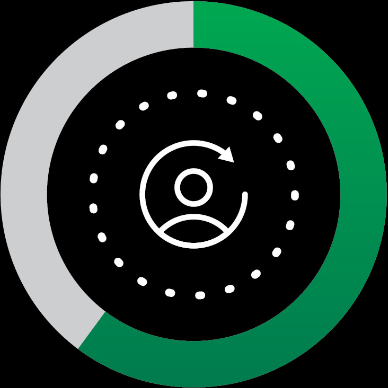Recent statistics show phishing threats continue to rise. Since 2019, the number of phishing attacks has grown by 150% per year— with the Anti-Phishing Working Group (APWG) recording 1,003,924 phishing attacks in Q1 2025, the highest since late 2023.
In early 2025, phishing scams using AI to generate convincing emails targeted Gmail, Outlook, and Apple Mail users, leading to a spike in identity theft and financial fraud.
Phishing simulations reduced real phishing email clicks by 76%, per a 2022 Meta study.

Human involvement in cybersecurity breaches remained about the same as the previous year - 60%.



Credential abuse and social actions - like phishing - were major factors in these types of breaches.
Simulation content
Detailed report
Progress monitoring
Educational resources
A proactive security awareness training platform enhances employees’ security awareness
Engaging visual content to learn cybersecurity knowledge
Quiz to access & reinforce key concepts
Summarize the outcomes and gain insights into future security awareness training
Cope with real world phishing attack attempts
By transforming employees from a potential vulnerability into a resilient line of defense, we help to strengthen your overall security posture and reduces the risk of costly security breaches.
How to run a phishing simulations campaign
· Localized email content
· Simulate multiple scenarios
· Closely resemble the real-life threats
· Cantonese & English platform interface
· Cantonese narration & voiceovers
· Make learning vividly
· Crafted content and materials
· Engaging videos
· Complete Knowledge Structure
· Follow-up online quiz
· Instant result & feedback
· Pinpoint the knowledge gaps
The phish-prone percentage of an organization before and after deploying
Help organization's security department to measure and analyze the results, and
Use the insights to pinpoint the vulnerability and improve upon their future security training
The percentage is relatively high – if over 30%
The percentage is normal to slightly high – if 10% ~ 29%
Objectives – to reduce failure rate under 10%


· Designed and deployed securely
· Internal system without relying on third-party services
· Ensure data privacy since it's hosted privately
· Customizable phishing scenarios
· Control over campaign execution and reporting
· Rolled out a territory-wide cybersecurity training initiative
· Deployed by governmental sectors
· Provided training for 150,000+ civil servants
· Demonstrating proven effectiveness in large-scale cybersecurity education
· Comprehensive educational resources
· Engaging visuals and formats including videos and quizzes
· Proven by HK Gov body for its large-scale effectiveness and long-term viability in public sector cybersecurity education and training